- Articles
- Cherries
- Minutiae
- Q&A
- RAINN
- Releases
- Reviews
- Site News
- Them
- Toriphiles
- Touring
- TV/Radio/Web
- Video
News Archives
Keep an eye on our Twitter and Facebook pages since we often post quickie updates there when we're on-the-go.
During tours, we do our best to cover setlists in real-time on Twitter. If you want to tweet a show in, just DM or @ us on the day and tell us to watch your stream that night.
Tori is touring in 2017 to support the release of Native Invader. The European legs runs from early September through early October and the North American leg runs from late October to early December. We do not know if additional dates elsewhere will be added.
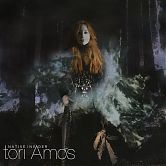
Native Invader (album, 2017)

Unrepentant Geraldines (album, 2014)

Gold Dust (album, 2012)

Night of Hunters (album, 2011)

Midwinter Graces (album, 2009)
 Abnormally Attracted To Sin (album, 2009)
Abnormally Attracted To Sin (album, 2009)
Live at Montreux 1991/1992 (DVD, 2008)
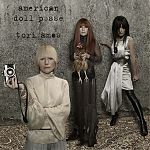
American Doll Posse (album, 2007)
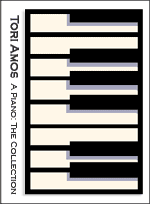
A Piano (boxed set, 2006)
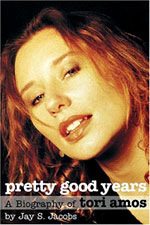
Pretty Good Years
(bio, 2006)

Fade To Red
(DVD, 2006)
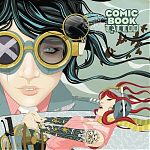 Comic Book Tattoo (book, 2008)
Comic Book Tattoo (book, 2008)News: ChordStrike Interview (May 27, 2009)
My favorite albums have always been things that have a side three and a side four, with two distinct pieces of vinyl that I can hold in each of my hands—very tangible, like the bottom of a woman. You hold each beautiful piece of vinyl in your hands and you think, Yes, the goddess is in my hands.
ChordStrike, a blog associated with Amazon.com, talked to Tori, focusing almost entirely on Abnormally Attracted to Sin: the title, the recording and writing process, its length and a couple of the songs from the record. Whlie a bit too focused for our tastes, it’s actually a pretty good discussion about the record for those curious about it. Perhaps not something for the dedicated Toriphile, but the casual fan or curious listener.
Thanks to velvet and Jenn for finding it!
Tori Amos Interview
by Lucas Hilbert on May 27, 2009
Tori Amos is now 45, but she’s no less provocative than when she was making landmark albums like 1992’s Little Earthquakes in her mid-20s. Her 10th studio album, Abnormally Attracted to Sin, contains its trademark share of emotional land mines — see “Maybe California” — and also its trademark share of exquisite piano work.
But confirmation that Amos is still provocative isn’t confined to just her music. In interviews, her language is PG-13: When talking with Amazon from Cornwall, England, recently, she described her love of multi-sided albums by crafting a metaphor involving the posterior of a beautiful woman. Other topics she touched on included high-heeled shoes, power and control, and mothers as sexual creatures.
Q: Congratulations on the new album! Tell us about the title. Are you abnormally attracted to sin?
A: I’m sure if you asked the church fathers, they’d say that everything I think about in my waking and sleeping hours is probably pretty sinful.
Q: Got it. You had sin on the brain. Tell us about the production process. Was it much different than your nine previous studio albums?
A: A lot of energy was put into different compositional styles. I started composing when I was out on the road this last time. And when I travel I usually get these waves of—I don’t know—songs coming to visit me. And maybe because you’re out with different influences, and your senses are getting aroused in a beautiful way, sometimes you’re not feeling in your safe zone, so you start thinking about things you might not think about in your normal routine.
Q: The press notes for Abnormally Attracted to Sin describe it as a dark and rich album. Is that how you see it?
A: I think maybe what’s being said is that there are a lot of different styles on the record. I’ve been composing now for over 40 years, and each song in a way takes you to this different place. Maybe some of them are dark, rich caves. Hopefully there’s a nice piano player sitting there taking your request in the cave. And if the caves are really dark, hopefully there’ll be a nice pair of high-heeled shoes to get you out of there.
Q: You’ve also said you wanted this record to have a handmade feel. Why was that important to you?
A: Well, this is not a time where the world seems to feel abundance. And so when corporations and everybody and even journalists are thinking about music in the form of a tune—things are now a tune, a sound bite instead of double album—you sometimes want to get away from that. My favorite albums have always been things that have a side three and a side four, with two distinct pieces of vinyl that I can hold in each of my hands—very tangible, like the bottom of a woman. You hold each beautiful piece of vinyl in your hands and you think, Yes, the goddess is in my hands. I’ve always loved albums that take me on this trip away from whatever my life was at that moment. In my mind I’ve been creating double albums for the last many years. That’s what I’m interested in—a long-form novel. I wanted to do that as well as give people a visual they could spend time with
Q: You’re talking about the 16 short videos—“visualettes,” as you’re calling them—that come with the album. Right?
A: Yes. Universal would say they took too much money to make, but part of the money was mine. I put up what I thought I should so people are not getting a postcard, they’re getting the whole installation. I wanted you to be able to take a couple hours and lose yourself. This is a feast.
Q: You’re saying you paid for the visualettes yourself?
A: Oh yeah. Yes I did. I started this project when I was in the process of leaving Sony. I was making a live DVD at the end of the last tour, and they didn’t feel as if they could put up the money for it, so my manager said, ‘Tori will put up what she needs to.’ So I paid for it all by myself.
Q: So it sounds like you invested heavily in giving fans a complete package here. Do you care if people listen song by song, rather than to the whole album?
A: Oh, I don’t tell people what to do. I create worlds for you to walk into. I’m not creating a little pile of leaves for you to jump into, I’m creating a forest of sound. Some architects build cottages, some build cathedrals. I’m more interested in that shape where things are interconnected. It’s not just about a poem that lives on its own. There are people who are wonderful at that form. But I’m making the whole installation, not just the postcard. I’m not saying I don’t love postcards, but I like getting involved in something that takes me to another world for a long time.
Q: A lot of the songs on the album are about power and control. “Strong Black Vine,” for instance, is about religious intolerance. Is that something that’s been on your mind lately?
A: I think that in the last few years, I’ve been spending a lot of time thinking about how people might have authority but aren’t powerful people at all. And the reason they’re not is because they use their authority in ways to hurt other people—to control their lives in a negative way. And this has been something at the center of my life, trying to understand it. So the songs have come out of that.
Q: The song “Ophelia” seems to be about women’s power—or the lack of it—in relationships. Can you tell us about that?
A: Well, as a woman it’s hugely important to know what you’re attracted to and just to be honest with yourself about it. Because the song “Ophelia” is about a woman who is drawn to situations—I would say not just men but situations—where somebody needs to have control over her in some way, and she hasn’t been able to break the chain of these people. They seem to come in different forms in her life. So until you yourself begin to know, Why am I attracted to people who are like this? then you can’t break free. Sometimes you’re not willing to look at this characteristic in them; you’re not willing to see it for some reason. And that’s the story of “Ophelia.”
Q: There also seems to be a mother theme running through Abnormally Attracted to Sin. “Maybe California” is about a mother, and “Mary Jane” is about a son. And it talks about puberty! And fornication! Can you tell us about that?
A: Yes, there’s definitely a mother theme. I thought, If you’re going to talk about redefining sin, then mothers certainly have to be involved. Because a lot of mothers around the world have a similar difficulty integrating the idea of eroticism. Sometimes the idea becomes this top-shelf vulgar demeaning thing—not hot hot hot but just gross gross gross—and you’re thinking, Well, O.K., so how has it become that it’s either a beautiful spiritual thing that doesn’t involve a whole lot of sweat, or if you’re involved in a whole lot of sweat you end up with a whole lot of boot marks on your neck? With mother, the word inside is ‘other.’ And we sometimes spend all our time thinking about everybody else and nurturing them. And we don’t spend that bit of time thinking, O.K., I also have to make sure the woman side of me is being looked after and kept alive. So through the record the mother presence is there, because if you’re going to talk, like we’re saying, about the sexual side, the mothers have to be a part of it. I’m a mother, and to me juggling and finding that balance is key.
Q: Explain the mother in “Maybe California.”
A: She’s a woman who’s tempted to commit suicide by jumping off a cliff. And it’s really up to you to decide if another woman has talked her out of it. Or a spirit, or herself. Or if she does jump off that cliff.
Q: Which of these 16 songs do you think listeners will connect with most?
A: I’m not sure because they’re very different. It’s a record that has different compositional styles. I’ve been writing a long, long time, and because it’s the 10th album, I wasn’t thinking, O.K., I’m going to do a record that’s based around the piano, or I’m going to do a record that’s strings. I thought it would be good to work with styles I’ve been working with for the last many, many years. And so I think you’ll see a lot of different things represented on the 10th album.
— Tammy La Gorce


